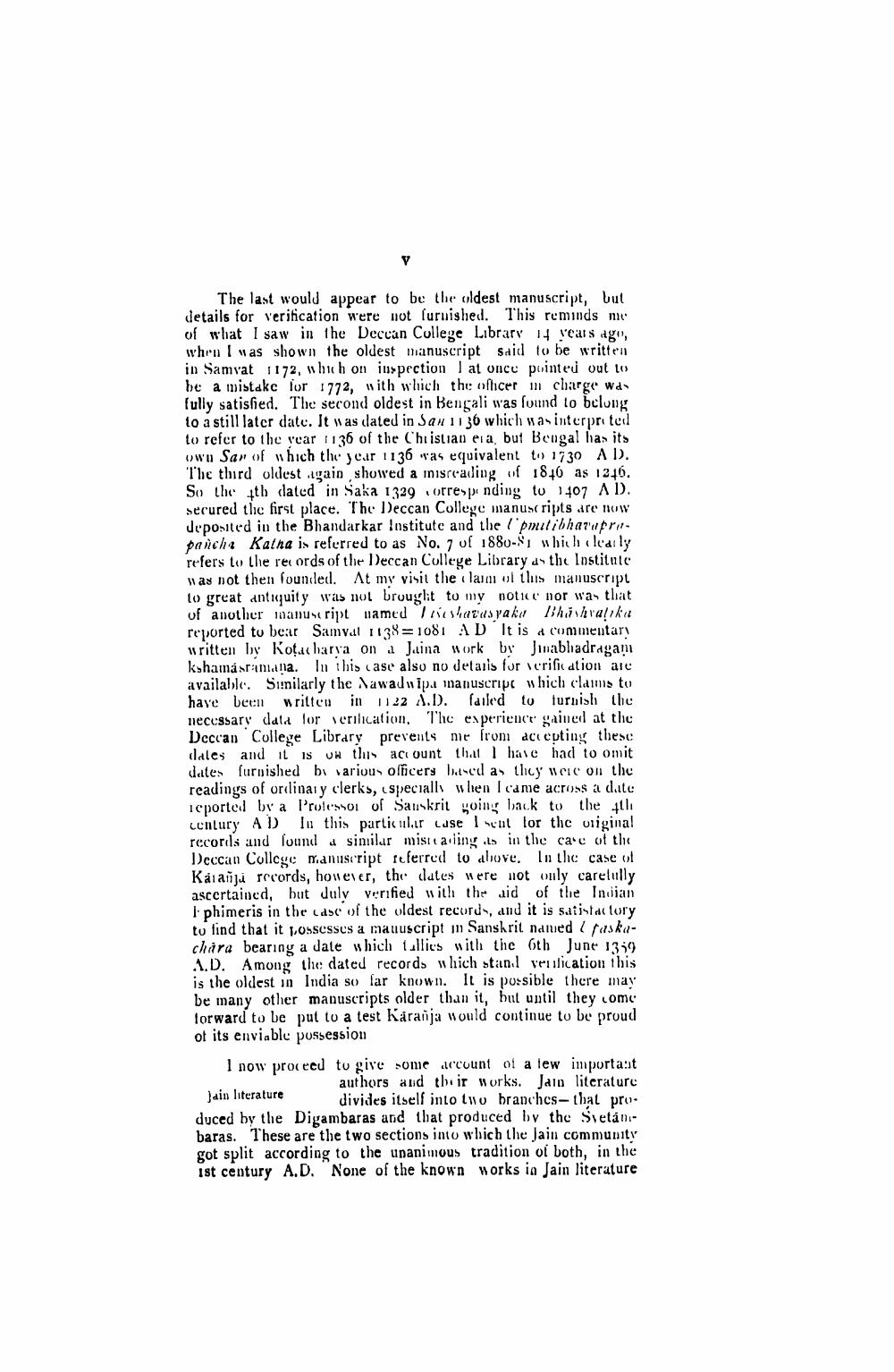________________
V
The last would appear to be the oldest manuscript, but details for verification were not furnished. This reminds me of what I saw in the Deccan College Library 14 years ago, when I was shown the oldest manuscript said to be written in Samvat 1172, which on inspection I at once pointed out to be a mistake for 1772, with which the officer in charge was fully satisfied. The second oldest in Bengali was found to belong to a still later date. It was dated in San 1136 which was interpreted to refer to the year 1136 of the Christian era, but Bengal has its own San of which the year 1136 was equivalent to 1730 AD). The third oldest again showed a misreading of 1846 as 1246. So the 4th dated in Saka 1329 orresponding to 1407 AD. secured the first place. The Deccan College manuscripts are now deposited in the Bhandarkar Institute and the 'pmitibhavaprapancha Katha is referred to as No. 7 of 1880-81 which clearly refers to the records of the Deccan College Library as the Institute was not then founded. At my visit the claim of this manuscript to great antiquity was not brought to my notice nor was that of another manuscript named Teshavasyaka Bhashvatika reported to bear Samvat 1138=1081 AD It is a commentary written by Kotacharya on a Jaina work by Jinabhadragam kshamásramana. In this case also no details for verification are available. Similarly the Nawadwipa manuscript which claims to have been written in 1122 A.D. failed to turnish the necessary data for verification. The experience gained at the Deccan College Library prevents me from accepting these dates and it IS On this account that I have had to omit dates furnished by various officers based as they were on the readings of ordinary clerks, specially when I came across a date reported by a Professor of Sanskrit going back to the 4th century AD In this particular case I sent for the original records and found a similar mist adding as in the case of the Deccan College manuscript referred to above. In the case of Karanja records, however, the dates were not only carefully ascertained, but duly verified with the aid of the Indian I phimeris in the case of the oldest records, and it is satisfactory to find that it possesses a mauuscript in Sanskrit named taskachara bearing a date which tallies with the 6th June 1359 A.D. Among the dated records which stand ventication this is the oldest in India so far known. It is possible there may be many other manuscripts older than it, but until they come forward to be put to a test Karañja would continue to be proud of its enviable possession
I now proceed to give some account of a few important authors and their works. Jain literature Jain literature divides itself into two branches- that produced by the Digambaras and that produced by the Svetambaras. These are the two sections into which the Jain community got split according to the unanimous tradition of both, in the 1st century A.D. None of the known works in Jain literature




